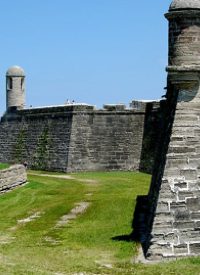
Interior Secretary Ken Salazar has been pressuring the National Park Service to locate sites related to the histories of women and minorities, particularly Latinos, which could be added to the National Register of Historic Places or otherwise preserved as parks or properties.
According to the Washington Post:
With the nation’s Latino population booming and now the country’s largest minority group, the Obama administration’s top Hispanic official is concerned that the federal government is not giving enough attention to Hispanic history and culture.
Salazar bemoaned the paucity of such locations:
Less than three?percent of all the national landmarks that we have the highest designation you can receive as a historic landmark are designated for women, Latinos, African Americans or other members of minority groups. That tells you that the score is not even….
I think when you look at the way Americans most understand the history of Latinos in this country, a lot of it is being told now through the lens of whats happening with the immigration debate. While thats an important debate that has security and moral implications, in my view, theres also a huge history of Latinos in the United States thats never been told.
This concern of Secretary Salazar is only one of several which was raised at White House meetings yesterday, which brought together business, political, religious, and entertainment figures to focus on whether the government is adequately serving Hispanics in education, business, military, and cultural areas. Because October has been designated Hispanic Heritage Month, both political parties are trying to connect with this growing voter bloc. President Obama himself is particularly interested in rekindling the enthusiasm in the Hispanic community which accompanied his 2008 run for the White House.
Earlier this year Salazar endorsed the creation of a national museum dedicated to the art, history, and culture of Hispanics as part of the Smithsonian Institution. He observed at the time:
My own view is America’s strength in the future is dependent upon America being inclusive of all of its people. In the United States today, we have about 50 million-plus Americans who are of Latino descent. … The history of all peoples has got to be told across America.
[The museum proposal is a] definitive plan that addresses the history of 1/6 of the population. We can’t deal with the whole world right now, but I think the time is now to do something like this.
Some observers have noted that it is not entirely clear how Hispanics would be separated from Americans in this approach. There has long been intermarriage between Hispanics and other ethnic groups in America, and the adoption of patrilineal surnames is also normal in society. Any attempt to classify who is or is not Hispanic would seem at the outset to discriminate against the children of a marriage in which the mother, but not the father, is Hispanic.
The whole attempt to classify a group called Hispanic also holds many problems. Cubans, Mexicans, and Argentineans are all notionally so labelled; however, most members of these groups see more differences among themselves than commonalities. Even within a large nation such as Mexico, there are significant cultural differences between those who live in Yucatan and Juarez.
Additionally, this issue is not limited to Hispanics.
As the distinguished black economist Dr. Thomas Sowell has pointed out in his book Ethnic America: a History, any attempt to classify black Americans is crude and inaccurate. Each black ethnic group is in turn composed of subgroups with different histories of their own; for instance, some blacks in America are descended from black slaves, and some from free blacks.
America is composed of countless ethnic groups Poles, Lithuanians, Swedes, Italians, Greeks, Koreans, Jews, Ukrainians, Irish, Vietnamese, and scores of others who are not identified with a large voting bloc and so who receive only token official recognition of their contributions to American life. Each of these groups of Americans voluntarily maintains their culture and honors their most important figures.
Photo: Castillo de San Marcos National Monument, St. Augustine, Florida (original fort begun by the Spaniards in 1672).



